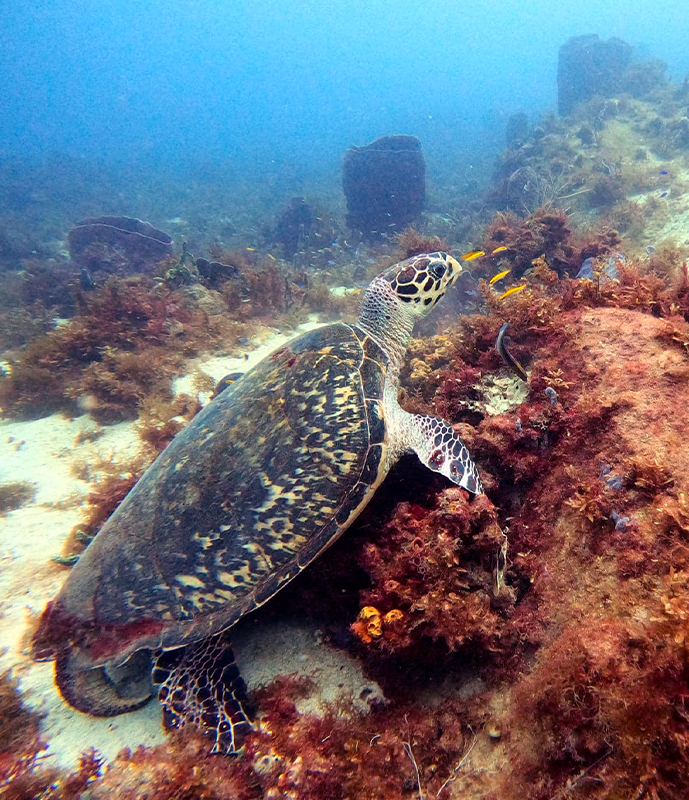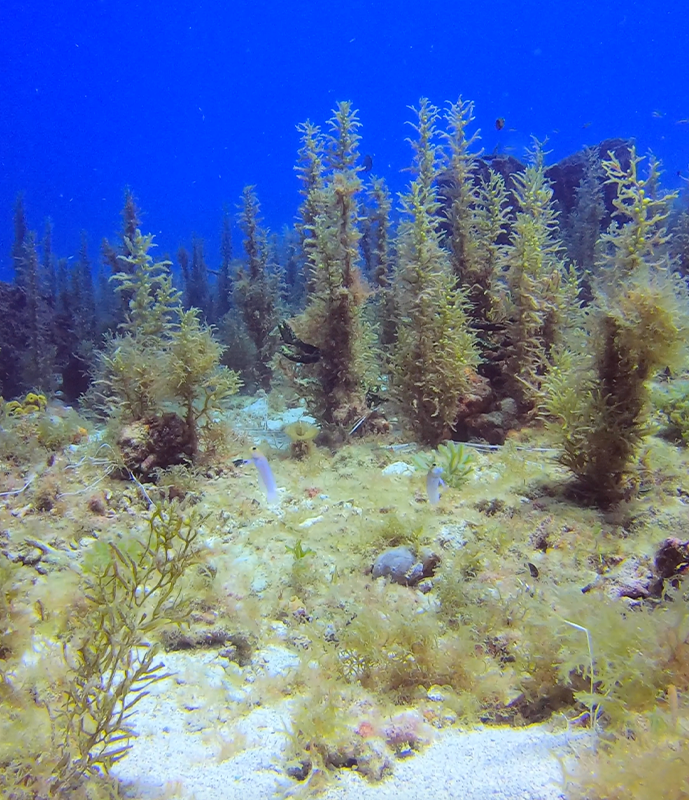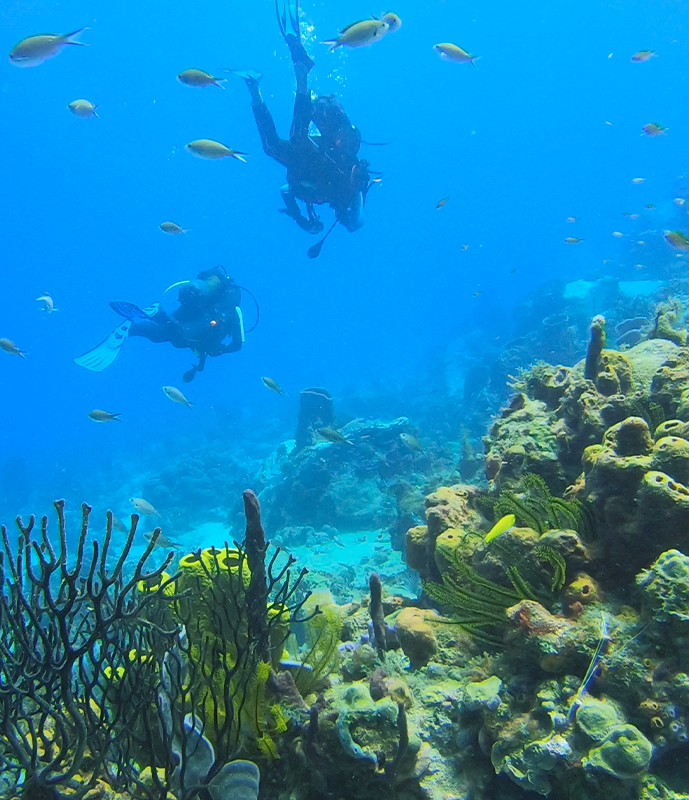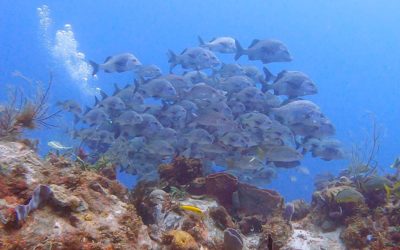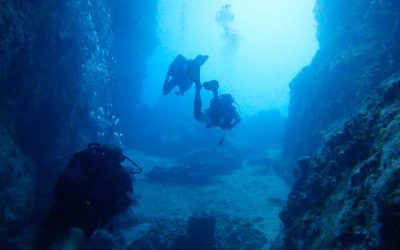Diving at Anse Dufour
– Martinique (0-25m)
Although the two beaches are close to each other, they are very different from each other. While Anse Noire, as its name suggests, offers a black sand beach, Anse Dufour is characterised by clear waters and an idyllic golden sand beach.
What is Anse Dufour in Martinique?
Anse Dufour and Anse Noire are a real geological curiosity in Martinique. They are the result of what is commonly known as an inversion of relief in a volcanic context.
The two beaches are separated from each other by a rocky tongue, born of a lava flow. Previously, the flow was located in the hollow of the relief, in a valley. But the erosion of the surrounding land has finally placed it on a higher level. Hence the famous term ‘relief inversion’.
The volcanic rocks surrounding the two beaches do not erode in the same way either. This is why the sand on Anse Dufour is white, due to the erosion of shells and corals, unlike the black sand on the neighbouring beach.
The start of the dive is from the southern side of Anse Dufour. A nice scree from 0 to 7 meters offers an ideal playground for baptisms. At the foot of this scree, there is a grassy area where many green turtles live.
Once out of the cove, the dive continues along a beautiful drop off where there is a good chance of encountering hawksbill turtles.
What level to dive at Anse Dufour?
Anse Dufour lends itself perfectly to dives of all levels, whether for a first dive, snorkeling or higher French or PADI levels.
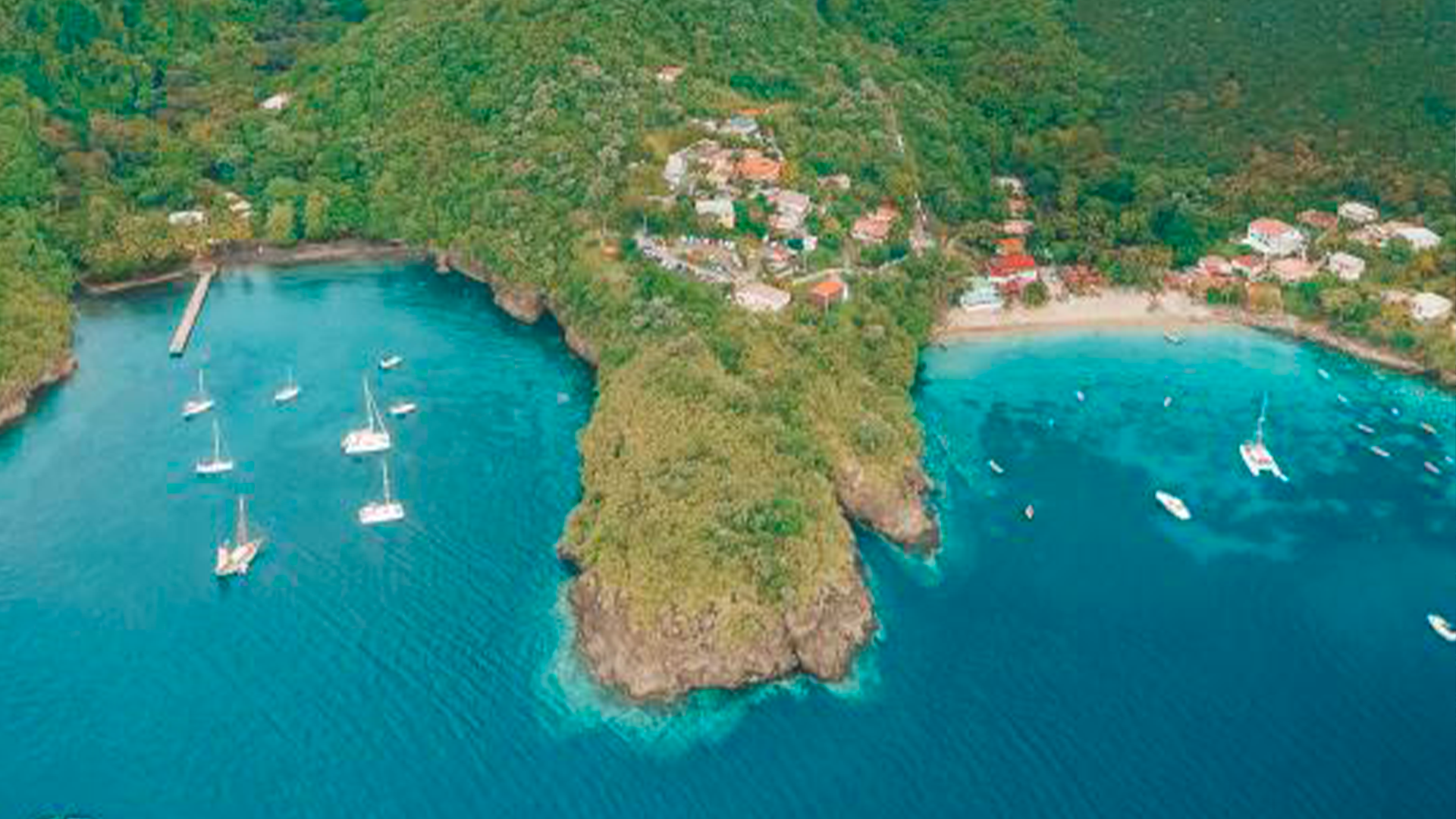
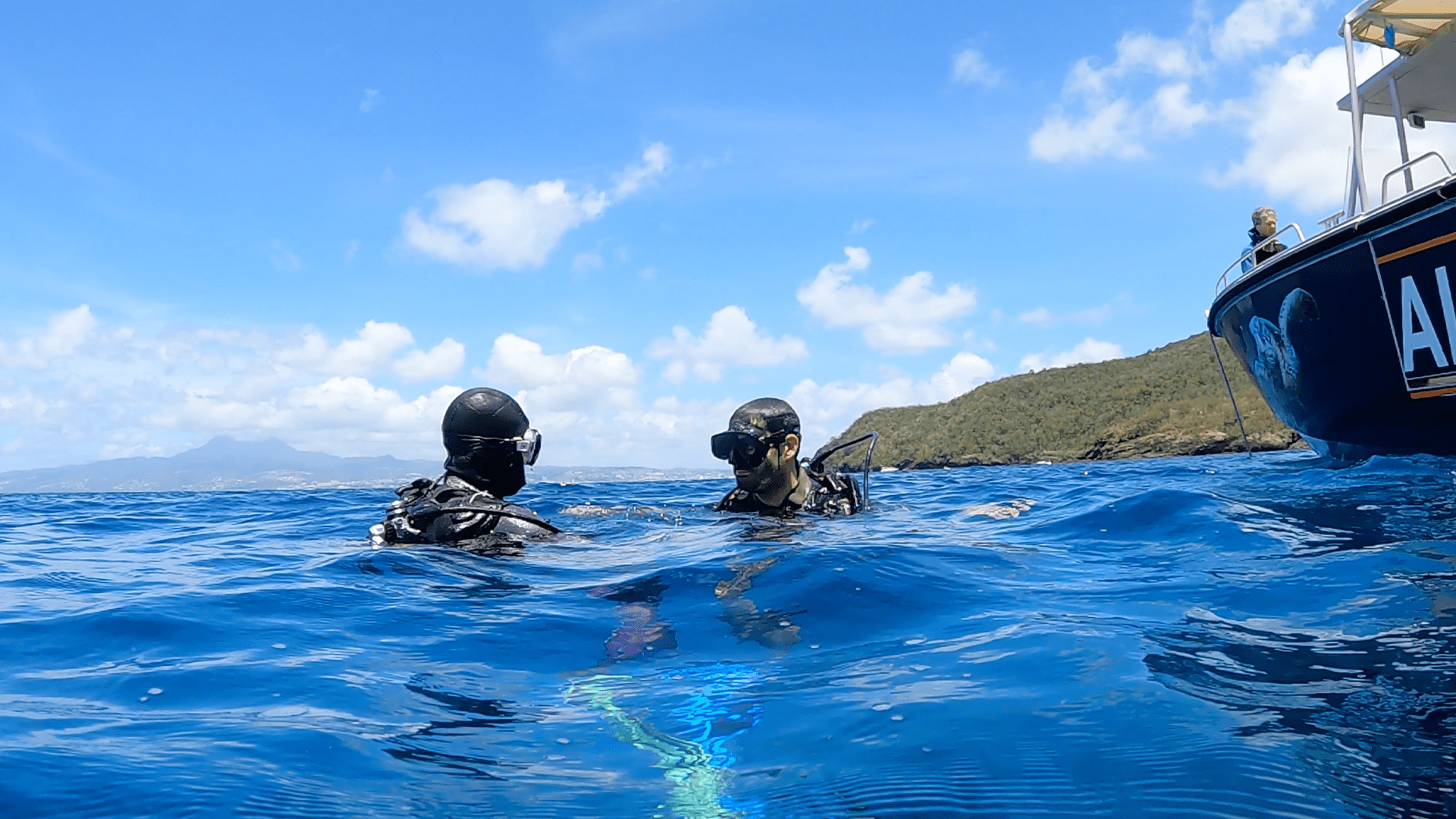
What can you see while diving at Anse Dufour?
Diving at Anse Dufour means having the pleasure of meeting the famous turtles that are so emblematic of Martinique. And rather twice than once! And why? Simply because the site allows you to meet green turtles and hawksbill turtles. So, can you tell the difference between these two species during your dive? Come on, we’ll help you a little! The green turtle has a round head and the scales of its shell are stuck together. Whereas the hawksbill turtle has a sort of pointed beak and its scales overlap one another. Its scales overlap, which is where its name comes from. This reptile loves to hang out in the schools of spotted winged ctenophores that come along the reefs. This is one of the basic elements of its diet. Don’t worry, ctenophores are sometimes confused with jellyfish. Nothing to see. You can approach them without fear, they do not sting and you can even observe the small electric current that circulates inside!
How to go diving at Anse Dufour?
The advice of the ALPHA DIVING team
Diving at Burgos Point
Diving at Burgos Point - Martinique (15-60m)The Burgos Point is one of the most beautiful dive sites on the Caribbean coast that should not be missed. It is also the perfect site to go and meet schools of large peaceful fish, such as lippus or pagres.What is Burgos...
Diving at the Little Mermaid
Diving at The Little Mermaid - Martinique (0-35m)The Petite Sirène diving spot in Martinique is without a doubt the ideal place to meet many varieties of fish, crustaceans and coral invertebrates. It is a great place for diving enthusiasts at different times of the...
Diving at Diamond Rock
Diving at Rocher du Diamant - Martinique (0-55m) Diving in Martinique is irrevocably associated, for the connoisseurs, with the unmissable spot of the Diamond Rock. If the Rock bears the name of the most beautiful and sparkling jewel, it is not by chance. Many are...
Where to find us?
Our Alpha Plongée centre is located on the beach of Grande Anse d’Arlet, about 200m to the right of the pontoon, looking out to sea. We are in the middle of the pedestrian street that runs along the seafront, between the restaurants “Bidjoul” and “Les Arcades”.
If you decide to join us by car, you can park in the large car park which overlooks the road opposite the grocery shop. It is indicated by a large blue sign. To find us, you just have to cross the road and slip between two rows of houses.
Alpha Plongée Martinique
97217 LES ANSES D’ARLET.

